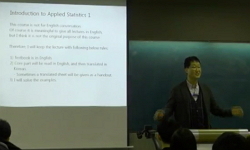래반트(Levant) 지역 옹관묘의 분포와 성격을 살펴본 결과 다음과 같은 몇 가지 결론을 얻을 수 있었다. 첫째, 래반트 지역의 옹관묘는 메소포타미아(Mesopotamia)의 유프라테스(Euprates)강과 티그...
http://chineseinput.net/에서 pinyin(병음)방식으로 중국어를 변환할 수 있습니다.
변환된 중국어를 복사하여 사용하시면 됩니다.
- 中文 을 입력하시려면 zhongwen을 입력하시고 space를누르시면됩니다.
- 北京 을 입력하시려면 beijing을 입력하시고 space를 누르시면 됩니다.
https://www.riss.kr/link?id=A108559845
- 저자
- 발행기관
- 학술지명
- 권호사항
-
발행연도
2023
-
작성언어
-
-
주제어
옹관묘 ; 래반트 ; 래바론 ; 메소포타미아 ; 분포 ; Jar Burial ; Levant ; Lebanon ; Mesopotamia ; Distribution
-
KDC
233
-
자료형태
학술저널
-
수록면
84-143(60쪽)
- 제공처
-
0
상세조회 -
0
다운로드
부가정보
국문 초록 (Abstract)
래반트(Levant) 지역 옹관묘의 분포와 성격을 살펴본 결과 다음과 같은 몇 가지 결론을 얻을 수 있었다.
첫째, 래반트 지역의 옹관묘는 메소포타미아(Mesopotamia)의 유프라테스(Euprates)강과 티그리스(Tigris)강 유역, 그리고 레바론(Lebanon) 해안선을 따라 초승달(Cresent) 모양으로 집중적으로 분포되어 있다. 이러한 옹관묘의 분포는 농경에 필요한 관개(灌慨)와 해양 문화의 이주와 연계되어 있다. 둘째, 래반트 지역 옹관묘는 초기신석기시대(7500 B,C)에 토기를 제작하기 시작하면서 실제 사용하던 토기를 활용하여 옹관묘로 사용하였다. 셋째, 래반트 지역의 옹관묘는 초기신석기시대(Early Neolithic, 7500∼5500 B.C)에 출현하여 성행하였고 후기동석기시대(Late Chalcolitic, 5200∼3500)까지 유행하다가 철기시대(Iron Age, 1200∼586 B.C) 이후에 지속적으로 이어지고 있다. 넷째, 래반트 지역의 옹관묘에 굴장을 한 이유는 굴장의 모습이 태아의 모습과 동일하기 때문에 새로 탄생하는 재생의 의미를 담고 있다. 다섯째, 래반트 지역의 옹관묘에서 시행된 이차장은 아시아의 섬과 해안가를 중심으로 분포되어 있고 옹관묘의 분포범위와 일치한다. 여섯째, 래반트 지역의 옹관묘는 주거지의 난간에 매장하는 비율이 가장 높고, 다음으로 주거지 난간과 벽 사이, 주거지 내부인 방에 매장하였다. 주거지 안에 어린아이의 옹관묘와 종종 발견되는 벽감(壁龕)은 신성한 제단의 역할을 하였다. 일곱째, 옹관묘에서 발견되는 구멍은 지석묘의 영혈(port-hole)과 같은 의미로 죽은 자의 영이 드나드는 통로이다. 베트남 종까보 옹관의 견부에 영혈이 존재하고 한국의 청동기시대 공주군 남산리와 송학리에서 출토된 옹관에 구멍을 내서 영혈을 만들었다.
향후 래반트 지역 옹관묘의 연구는 어느 부족이 옹관묘를 사용하였고 아시아와 유럽에 전해주었는지를 구체적으로 파악해야 할 과제가 남아 있다. 옹관묘는 농경과 관련된 해양 문화와 밀접하게 관련되어 있어 옹관묘 조영자의 주체자 파악이 이루어져야 동서로 전파된 옹관묘 문화의 전파와 그 민족의 이주 과정을 규명할 수 있을 것이다.
다국어 초록 (Multilingual Abstract)
As a result of examining distribution and Characteristic of the Jar burial in the Levant region, the following conclusions could be drawn. First, Jar burial in the Levant are intensively distributed in a crescent shape along the banks of the Euphrate...
As a result of examining distribution and Characteristic of the Jar burial in the Levant region, the following conclusions could be drawn.
First, Jar burial in the Levant are intensively distributed in a crescent shape along the banks of the Euphrates and Tigris rivers in Mesopotamia and along the coastline of Lebanon. The distribution of these Jar burial is linked to the irrigation necessary for agriculture and the migration of maritime cultures. Second, as for the Jar burial in the Levant region, as earthenware production began in the early Neolithic period (7500 B,C), actual earthenware was utilized and used as a Jar burial. Third, Jar burial in the Levant appeared and became popular in the Early Neolithic (7500-5500 B.C.), and were popular until the Late Chalcolitic (5200-3500), then in the Iron Age (1200-586 B.C.). continues to follow. Fourth, the reason for the burial in the Jar burial in the Levant region is that the shape of the burial chamber is the same as that of the fetus, so it contains the meaning of rebirth. Fifth, the secondary burial performed in the Jar burial in the Levant region is distributed around the islands and coastal areas of Asia and coincides with the distribution range of the Jar burial. Sixth, in the Levant region, the proportion of burials on the floor of the dwelling was the highest, followed by the burial in the room between the floor and the wall of the dwelling, or inside the dwelling. It can be seen that the jar burial of children and niches often found in dwellings served as sacred altars. Seventh, the hole found in the Jar burial has the same meaning as the port-hole of a dolmen, and is a passage through which the spirits of the dead pass. Port-hole are on the shoulder of the Chong Ka-bo tube in Vietnam, and they are excavated from Namsan-ri and Songhak-ri at Gongju-gun in the Bronze Age of Korea.
In future research on Jar burials in the Levant, there remains a task to specifically identify which tribes used Jar burial and transmitted them to Asia and Europe. Since Jar burial is closely related to maritime culture related to agriculture, it is necessary to identify the subject of Jar burial construction, so that the diffusion of Jar burial culture spread from east to west and the migration process of the people can be identified.
목차 (Table of Contents)
- Ⅰ. 머리말
- Ⅱ. 래반트 지역 옹관묘의 자연지리·고고학적 환경
- Ⅲ. 래반트 지역 옹관묘의 분포
- Ⅳ. 래반트 지역 옹관묘의 성격
- Ⅴ. 맺음말
- Ⅰ. 머리말
- Ⅱ. 래반트 지역 옹관묘의 자연지리·고고학적 환경
- Ⅲ. 래반트 지역 옹관묘의 분포
- Ⅳ. 래반트 지역 옹관묘의 성격
- Ⅴ. 맺음말
동일학술지(권/호) 다른 논문
-
- 한국성서고고학회
- 진지훈
- 2023
-
- 한국성서고고학회
- 박종수
- 2023
-
- 한국성서고고학회
- 송요하
- 2023
-
[고고학 논단] 성경고고학에서 본 하나님의 제단과 우상의 제단 비교 II
- 한국성서고고학회
- 원용국
- 2023




 스콜라
스콜라






